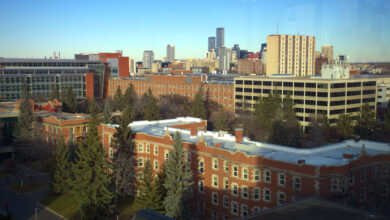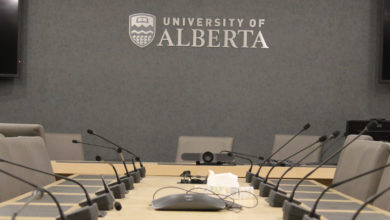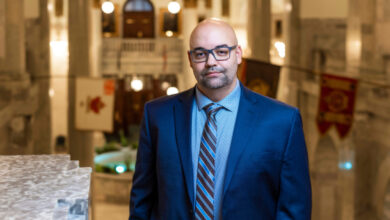Federal budget 2025: Post-secondary and research impact
“We're starting a new era. We know the world's changed, our strategy has to change with it and we choose Canada,” Carney says.
 Rachel Narvey
Rachel NarveyOn November 4, Prime Minister Mark Carney’s Liberal government tabled the 2025 federal budget plan. It promises a major boost to Canada’s post-secondary and research sectors, pairing ambitious investments in innovation and youth employment with a pledge to keep day-to-day government spending in check. The budget plan also features changes in immigration and sustainability related targets.
“We’re starting a new era. We know the world’s changed, our strategy has to change with it and we choose Canada,” Carney said in a comment to reporters before he tabled the budget.
It outlines a five-year plan that emphasizes long-term growth and national resilience. While the government promises to “spend less on government operations and cut waste, so we can invest more in growing our economy,” the education and innovation sector is set to benefit from a multi-billion dollar investment aimed at talent development and research competitiveness.
Support for research and innovation
The plan includes a $1.7 billion International Talent Attraction Strategy, which features $1 billion over 13 years for new research chairs funded through the federal granting councils: Natural Sciences and Engineering Research Council of Canada (NSERC), Social Sciences and Humanities Research Council (SSHRC) and the Canadian Institutes of Health Research (CIHR).
It also sets aside $400 million over seven years for research infrastructure through the Canada Foundation for Innovation.
Additional measures include $334 million for quantum technologies, $443 million over five years for critical-minerals research, and nearly $1 billion in artificial intelligence (AI) and computing infrastructure to strengthen Canada’s technological sovereignty.
University of Alberta President and Vice-chancellor Bill Flanagan stated that the budget “offers significant opportunities for the U of A to advance its global research leadership and attract the world’s best talent to our country and our university.”
“Budget 2025 represents a strong signal of federal confidence in Canada’s research universities — and a major opportunity for the U of A to continue leading in talent, innovation, and real-world impact on a national and international scale.”
Youth and student employment
Students and young workers are also central to Ottawa’s plan. The budget earmarks more than $1.5 billion over three years to expand employment and training opportunities:
- $595 million for Canada Summer Jobs, creating about 100,000 placements over two years.
- $635 million for the Student Work-Integrated Learning Program, expected to generate 55,000 paid placements.
- $308 million for the Youth Employment and Skills Strategy to connect graduates with entry-level work.
- $40 million for a new Youth Climate Corps, providing paid training in clean-energy and adaptation projects.
U of A Students’ Union (UASU) Vice-president (external), Abdul Abbasi, told The Gateway in a statement that “the most significant update from the budget is funding for the Student Work Placement Program (SWPP).”
The budget is set to provide $635.2 million over three years to support roughly 55,000 work-integrated learning opportunities through the program.
Abbasi said that this budget’s promise of 55,000 work-integrated learning opportunities — increased from a previous number of 40,000 — is something that the Canadian Alliance of Student Associations (CASA) has advocated for. Abbasi serves as the chair of CASA.
Additionally, Abbasi said “CASA is concerned about the absence of student housing from the new housing strategy.” Advocating for affordable housing will be a priority going forward for CASA, he added.
Cuts to international students and worker entry targets
According to the budget’s first chapter, Canada plans to reduce the annual target for new temporary residents from roughly 673,650 in 2025 to 385,000 in 2026, with further tightening to 370,000 in 2027 and 2028.
The target for international students is set at 155,000 in 2026, which is down from about 305,900 in the previous plan. The target for temporary foreign workers is set at 230,000 in 2026 — down from 367,750 in 2025 — with projections of 220,000 in 2027-28.
These cuts reflect government concerns that the temporary resident pool — at 7.5 per cent of the population in 2024 — is no longer sustainable from a housing and infrastructure capacity standpoint.
Emphasis on clean economy and climate resilience
The budget plan also includes launching a new Climate Competitiveness Strategy and billions in incentives aimed at accelerating the clean-energy transition. The plan introduces tax credits for clean electricity, expands support for clean-technology manufacturing, and commits more than $2 billion over five years to strengthen critical-minerals and clean-tech supply chains.
Infrastructure funding also carries a strong climate component. The $51 billion Build Communities Strong Fund includes dedicated streams for renewable-energy projects, major building retrofits, and climate-resilient infrastructure such as flood-protection systems. Large-scale energy projects — including small modular reactors and lower-emission liquified natural gas (LNG) development — are highlighted as key steps in advancing Canada’s net-zero pathway.




